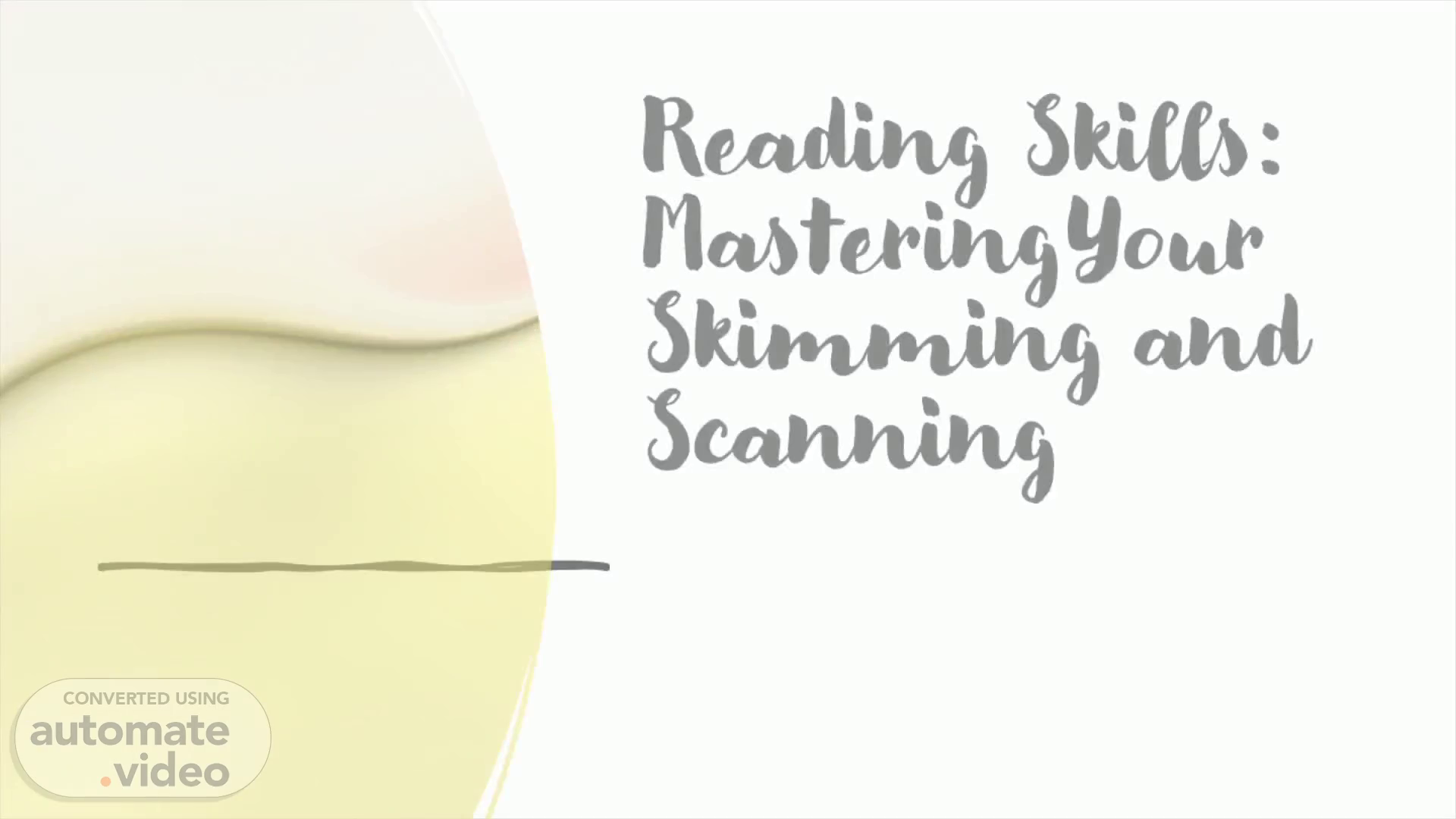
Reading Skills: MasteringYour Skimming and Scanning
Scene 1 (0s)
[Audio] Reading Skills, mastering your Skimming and Scanning.
Scene 2 (11s)
[Audio] Let's look at the lesson outcomes. By the end of the lesson, learners should be able to differentiate the skills of skimming and scanning. To know when to skim and scan and know the techniques of skimming and scanning..
Scene 3 (28s)
[Audio] What is skimming? Or, simply, what is the definition of skimming? Well, skimming and scanning are reading techniques. Skimming is a reading technique used to quickly identify the main ideas or key points in a text. When we skim, we want to immediately generate the idea of what we read. For example. Imagine you have a textbook chapter to review for an upcoming exam! The exam is just around the corner, and you need to quickly understand and be able to digest what you read. In this case, skimming is the best technique available..
Scene 4 (1m 12s)
[Audio] We discussed skimming in the last slide. But, what about scanning? Is it the same with skimming? It sounds almost the same though, but on the contrary, scanning is a reading technique used to find specific information within a text. When you read a text, you need to do it at a fast pace to locate specific information. You tend to skip unimportant facts just to focus on the needed information. For example. Let's say you're looking for the publication date of an article in a magazine. Your eyes will be moving rapidly from left to right top to bottom to locate the specific date that you are looking for..
Scene 5 (1m 59s)
[Audio] Do you know when you should use skimming skills? Usually, we use skimming when you need to determine if a text is relevant to your research or needs. We also use skimming to get a quick overview of a lengthy document or when we want to review the reading material before studying it in detail. For example, if you're at a library or conducting online research, you may come across numerous articles related to your topic. This is when skimming skills would come in handy to be used..
Scene 6 (2m 33s)
[Audio] In this slide, we will learn when to use scanning. Well, we will use scanning when you need to find specific information in a reading text such as name, date, statistic, or fact. Also, we should use scanning to answer questions with specific details from a text. Or, when you want to quickly locate information in a directory, dictionary, or reference material. Remember the time when you used a dictionary? Do you flip pages one by one or do you quickly go to a specific page and use your finger to scroll down and locate the specific word that you are finding the meaning of? Surely, you will use your scanning ability to find this specific information. Another example is, let's say you're searching for a contact's phone number in a long list of contacts. You will quickly go through the long list and locate the specific number that you need, won't it?.
Scene 7 (3m 35s)
[Audio] In this slide, you will study the techniques of skimming and scanning. You will start off with the skimming technique. Skimming techniques include reading headings and subheadings. When you read these headings, you tend to be able to formulate an idea of what the whole text is all about. Looking at the first and last sentences of paragraphs is another technique that you can use because the first and the last sentence is known to be interrelated very strongly to one another. You can also pay attention to bold, italicized, or underlined text. This kind of text will indicate some kind of importance. Another technique is to read the first and last paragraphs of a section and, focus on bullet points or numbered lists. Let's look at this example. If you're skimming a news article, you can start by reading the headline and subheadings to understand the main topic..
Scene 8 (4m 36s)
[Audio] Let's move on to techniques that you can employ for scanning. Scanning techniques include having a specific question or keyword in mind. Meaning, you must set in your mind at the very beginning what you want to locate. Then, your focus will only be on these settings in your mind. Then, what you need to do is to run your eyes quickly over the text, searching for that keyword. You can use your peripheral vision to scan lines of text. Peripheral vision here means what you can see to each side or up and down without moving your head, or everything that you can see that isn't in your central vision. What you can do next is to pay attention to headings, subheadings, and text formatting. At this point, you can skip irrelevant information that comes after. For example, when scanning a research paper for information about a specific experiment such as the experiment's name or keyword in mind..